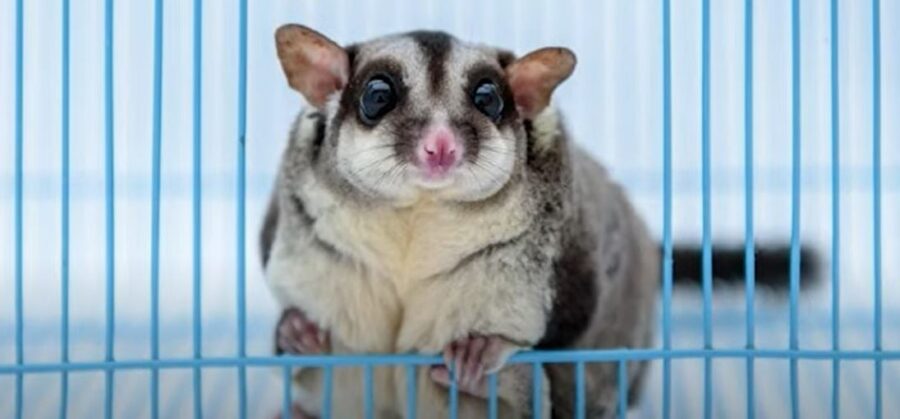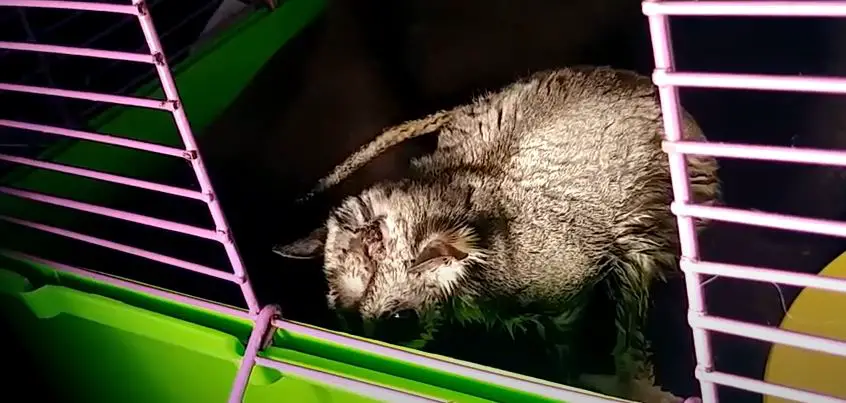My friend named her sugar glider Twitch. I told her that she could help him stop the twitching. She asked me, “Why is my sugar glider shaking?”
I showed her this article that explains the top 7 reasons why sugar gliders shake.
Why Is My Sugar Glider Shaking?
Shakiness and sugar gliders could be ranging from trembling, shivering or possible seizures. If your sugar glider is shaking after waking up, this is normal.
If it continues longer and you notice that the back legs seem weak, there could be a calcium deficiency in your sugar glider.

Why Is My Sugar Glider Having Seizures?
Some sugar gliders suffer from seizures. This could be due to a calcium deficiency. They may actually have a diet issue where they don’t eat or absorb enough calcium.
If your sugar glider is constantly lethargic, motionless, retreats to the back corner of the cage and doesn’t want to show affection, this may lead to tremors or seizures in the future.
The first step is to check if there is a calcium deficiency. They can always take calcium supplements if necessary. Sugar gliders who suffer from seizures could be under intense stress and pain and may also resort to self-mutilating by biting themselves.
7 Reasons Why Your Sugar Glider Is Shaking
I was really nervous the first time I saw my sugar glider shake. After some consultations with my veterinarian and members of the sugar glider community, we put together a list for you.
1. Wake Up Shakes
These aren’t the kind of morning shakes that we make with a blender. Your sugar glider is shaking to adjust body temperature.
It’s time to bring their body heat back to normal after waking up. A little shaking goes a long way. This type of shaking should end in a couple of minutes.
2. Shiver Shakes
Your sugar glider could just be cold in situations where temperatures are falling outside of their comfort zone.
- They can tolerate temperatures at 60°F – 90°F (15°C – 32°C).
- They are more comfortable around 80°F – 88°F (27°C – 31°C).
- Their core body temperature is trying to be adjust back to around 97°F (36°C).
- Anything under 50°F (10°C) for too long, can lead to hypothermia or sudden death.
If you are noticing your sugar glider curled up in a ball for too long without doing much else during the day, they might give up eating as well.

3. Terror Shakes
Our sugar glider was shaking when we brought her home for the first time. She had not adapted yet to this environment and was very fearful of us. She wanted to be alone for awhile and we backed off.
We noticed the shaking subsiding as a result. Keep in mind that sugar gliders are very sensitive. They see us and this environment as a very fearful place until they are able to adjust and realize that they are home, safe and secure.
Be aware of loud noises, sudden movements, children and pets nearby that can lead to a fearful environment for a sugar glider.
4. Low Calcium Shakes
We found out soon enough that sugar gliders are commonly known to have deficiencies in calcium. Their diet end up becoming high in phosphorus and low in calcium. They may need supplementation.
One of the main signs is that sugar gliders become weak or shaky as a result. It could be a problem with bone density as well.
The only way you’re going to figure this out as if a veterinarian runs a few tests to figure out whether or not calcium injections or supplementation is necessary.
Your sugar glider could be losing fur too. This article will uncover why this happens.
5. Sick Shakes
What I noticed is that sugar gliders can hide their symptoms of illness very well from their caregivers. A fever can lead to shaking when their core body temperature dips below 97°F (36°C) or their cloacal temperature is under 90 °F (32 °C),
It’s going to be difficult for you to find out any other type of illness that your sugar glider may have without consulting a veterinarian. You may also notice lethargy and sunken eyes as well.
Fleas are a concern for us. We need to know if sugar gliders get fleas and what do about it.

6. Low Blood Sugar Shakes
Hypoglycemia is what can occur to sugar gliders who are low in blood sugar. It is sometimes difficult for them to feed the way that they do in the wild. We try our best, but sometimes it could be a result of them refusing to eat.
Try to increase their sugar intake by offering a little bit of honey or glucose on the tip of your finger. You can also diluted it into their water.
You can also drop a little honey mixed with water into a syringe and feed it directly into their mouth. You might be able to tell if your sugar glider is hypoglycemic if their body feels cold to your touch.
7. Seizure Shakes
Unfortunately, seizures can occur in sugar gliders due to many reasons. They could have a loss of consciousness during a grand mal seizure. These seizures can last up to a minute or less.
Sometimes they will recover without anything to worry about. Other times a seizure can lead to more violent seizures in the future.
Thank you for visiting PocketPetCentral.com for the best information to help you enjoy the life of your pocket pet companion in a fun, safe & healthy way.

